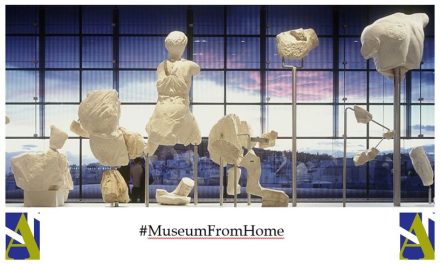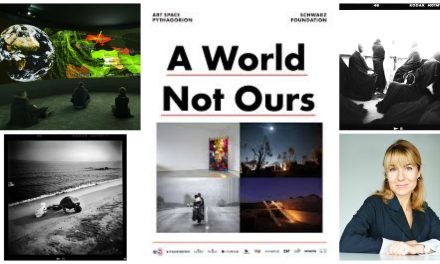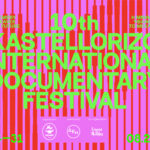Four new museums opened in Athens during the past year, further enriching the Greek capital’s vibrant cultural scene. Dedicated to painting, music, poetry and sports respectively each museum unveils a chapter of Greece’ enduring cultural narrative.
Alekos Fasianos Museum
The Alekos Fassianos Museum was designed and remodeled by architect Kyriakos Krokos, in collaboration with the artist Alekos Fassianos himself; it was completed in 1995 and it opened to the public in 2023. The location of the museum is where the artist’s family home used to be back in the 1930s and until the 1970s. The museum is run by the Alekos Fassianos Estate and aims at facilitating research into the creator’s oeuvre by opening a dialogue with fellow artists, researchers, curators and the public.
Alekos Fassianos (1935 2022) was a renowned Greek painter who gained recognition for his distinctive style, which was characterized by immediacy and a deliberate departure from standardized painting techniques. A student of Yannis Moralis at the Athens School of Fine Arts, where he studied from 1956 to 1960, he continued with studies in lithography in Paris (1960-1963), on a scholarship from the French government. In the following years he took to dividing his time between the Greek and French capitals. Among his appearances in international exhibitions are included the Biennales of Sao Paolo (1971), Venice (1972), and Graphics at Baden-Baden (1958).
Ancient Greek vase painting, the Byzantine and folk traditions, the painting of Theophilos and various types of modern art are all to be found at the basis of Fassianos’ artistic creation, which through clear and uniform color, free and skilled draughtsmanship, a “childlike” feeling, and sensitivity of rendering, result in highly personal formations. His work is dominated by the human figure – characteristic are the figures of the bicyclist and the smoker, which crop up again and again.
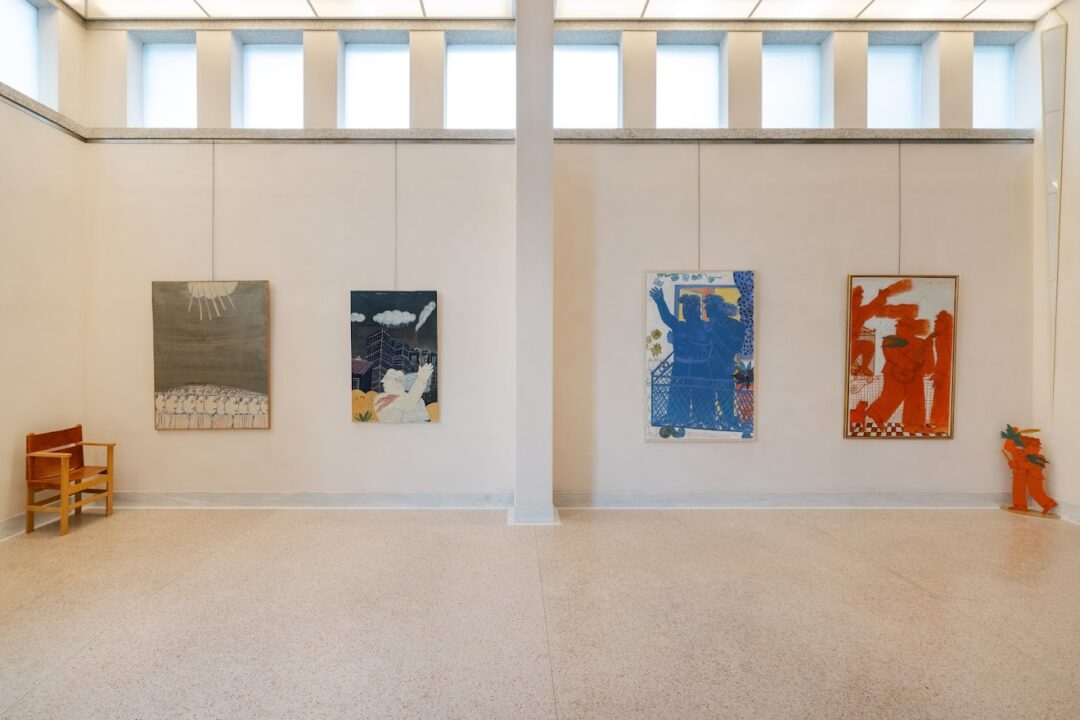
The exhibition space aims to focus on the diverse artistic practice of Alekos Fassianos. Presenting works from 1956 to the end of his life, the exhibition introduces the viewer to Fassianos’ development as an artist. Showcasing works from the early years in Paris in the 1960s and his brief influence from abstract art to the inspiration he later draws from Byzantine art with the use of gold leaves and a darker color palette, a series of paintings of his widely celebrated way of painting as well as collages and mixed media works. The exhibition also pays tribute to his neighborhood, Agios Pavlos. The “Myth of his neighborhood” unfolds through a series of works representing local life in the 40s, 50s and 60s in Athens.
The Alekos Fassianos Museum is significant to the contemporary artistic and architectural map of Athens for it is one of the few museums in the world in which the complicity between artist and architect underpins a dialogue between the works and the space that houses them.
Cavafy archive
Following the publication of the digital collection of the Cavafy Archive in March 2019, the Onassis Foundation created the Cavafy Archive, a tailor-made space in Athens dedicated to the poet’s archive, which was inaugurated in November 2023. The Cavafy Archive is situated on Frynichou Street in the central Plaka neighbourhood and houses over 2,000 items, including manuscripts of poems, literary works, articles and notes of Constantine Cavafy, the influential Greek poet, journalist, and civil servant from Alexandria.
Born on April 29, 1863 in Alexandria, Egypt, where he died on the same day in 1933, Constantine Cavafy is the leading poet of the Diaspora, writing in Greek far from Greek lands. The body of his poetry includes the 154 poems of the “canon”, 37 “repudiated poems”, most of which are juvenilia written in romantic katharevousa, 75 “hidden” poems that were found finished in his papers, and 30 “unfinished” poems. His poems often feature historical figures or creations of the poet’s imagination, with frequent references to familiar or less familiar elements of Homeric, Hellenistic, and Byzantine years. Today his poetry comprises a discrete pole in Greek literature, and he enjoys a prominent place in world literature as well.
The aim was to create a space for the poet’s writings and books, his personal items and furniture, surrounded by artworks that enable us to gain an in-depth understanding of his growing impact on artists from his era until today, a space open to researchers and the public, open to all.
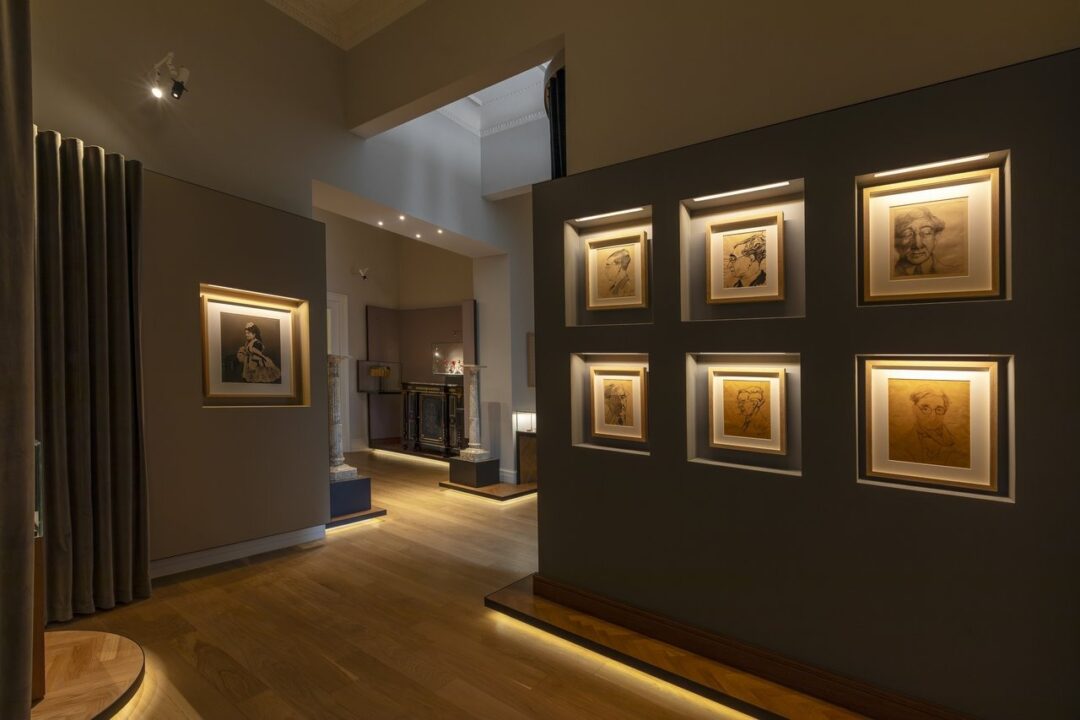
The newly designed Cavafy Archive introduces three accessible rooms for visitors: one exhibiting C. P. Cavafy’s personal items, another dedicated to Cavafy’s experiences in Athens, and the Reading Room. Following standard archival practices, the archive and library are housed within a specially arranged space.
The rooms displaying the poet’s personal belongings and furniture reflect the ambiance of his private space in Alexandria. Amid family photographs, vases, frames, a copy of his glasses, his desk, and other tiny and large objects, six portraits of the poet by contemporary artists stand out. Unique among the exhibited items are the poet’s untouched possessions: his death mask, as well as the first edition of Cavafy’s poems, edited by Rica Singopoulo and illustrated by Takis Kalmouchos, which was printed in 1935 following the poet’s death.
In ‘The Athens of Cavafy,’ the pages from Cavafy’s diaries during his trips to Athens stand out, along with a plethora of letters and notes expressing admiration and emotion for the work of the Alexandrian poet by Grigorios Xenopoulos, Ion Dragoumis, Angelos Sikelianos, Dimitri Mitropoulos, Tellos Agras, Napoleon Lapathiotis, and the lawyer and economist Georgios Charitakis, who conveyed Kostis Palamas’ praise for Cavafy’s work, among others.
Maria Callas Museum
The Maria Callas Museum is the first museum dedicated to the Greek soprano who became an opera legend; it opened its doors to the public in October 2023, in the heart of Athens. The museum was inaugurated on the occasion of the centenary of the artist’s birth, which was included in UNESCO’s list of anniversaries for 2023; it aims to introduce the general public to the career and personality of the internationally renowned soprano, while highlighting the elements of her technique that made her unique.
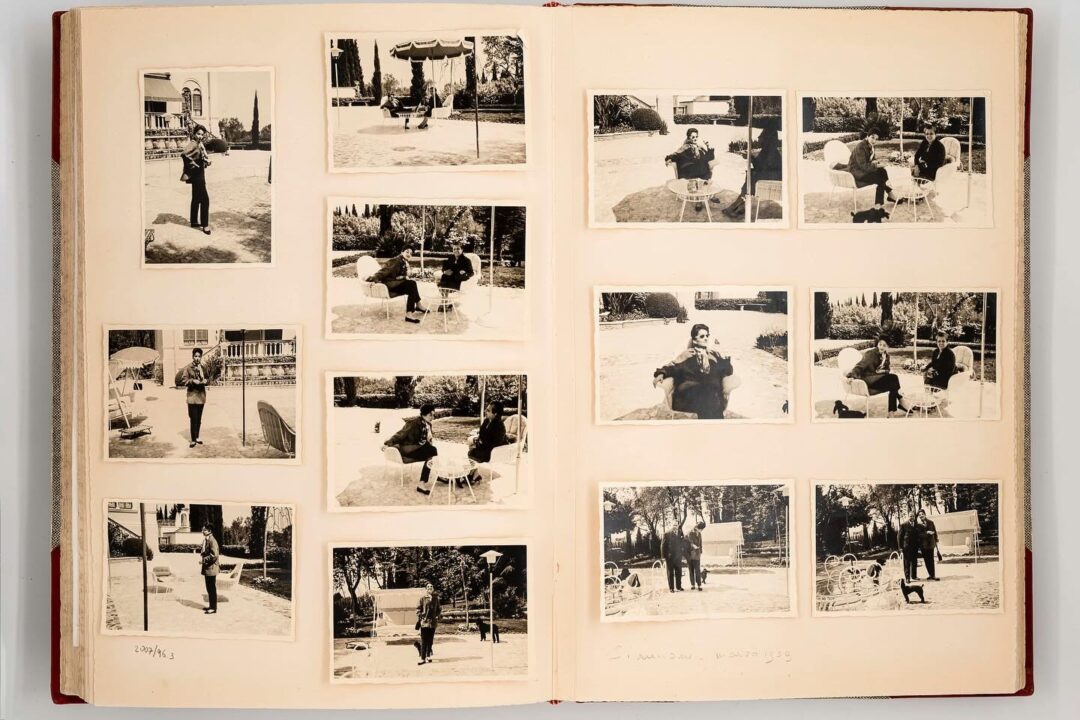
The museum features more than 1,000 items belonging to or associated with Callas, including priceless historical artefacts such as rare live recordings, personal items, record collections, sheet music, photographs, dresses, jewelry and much more. The collection was made possible by contributions and donations from various institutions and private owners.
Read more on our extensive Greek News Agenda article on the Maria Callas Museum.
Athens Olympic museum
Τhe Athens Olympic Museum, operating under the aegis of the International Olympic Committee and the Hellenic Olympic Committee aims to showcase the Olympic Games from antiquity to date; the spirit of fair play as a universal value; Greece’s critical role in promoting Olympism; Athens as an Olympic Capital, while at the same paying tribute to Greek athletes and presenting the Greek Olympic and Paralympic Champions who have won medals. The Museum of Athens is located next to the renovated Olympic Facilities, in the suburb of Maroussi, where the International Radio and Television Center was housed during the 2004 Athens Olympics and it is connected through a footbridge to the Olympic Stadium of Athens “Spyros Louis” (OAKA).
The Athens Olympic Museum is organized like a journey thought the history of the Olympic Games, through a chronological narration, highlighting three milestones of the Olympic Games: their birth in Ancient Olympia, their revival in Athens 1896 and the return of the Games in Greece during Athens 2004. The principles and values of the Olympic Movement are also showcased through an interactive multimedia exhibition.
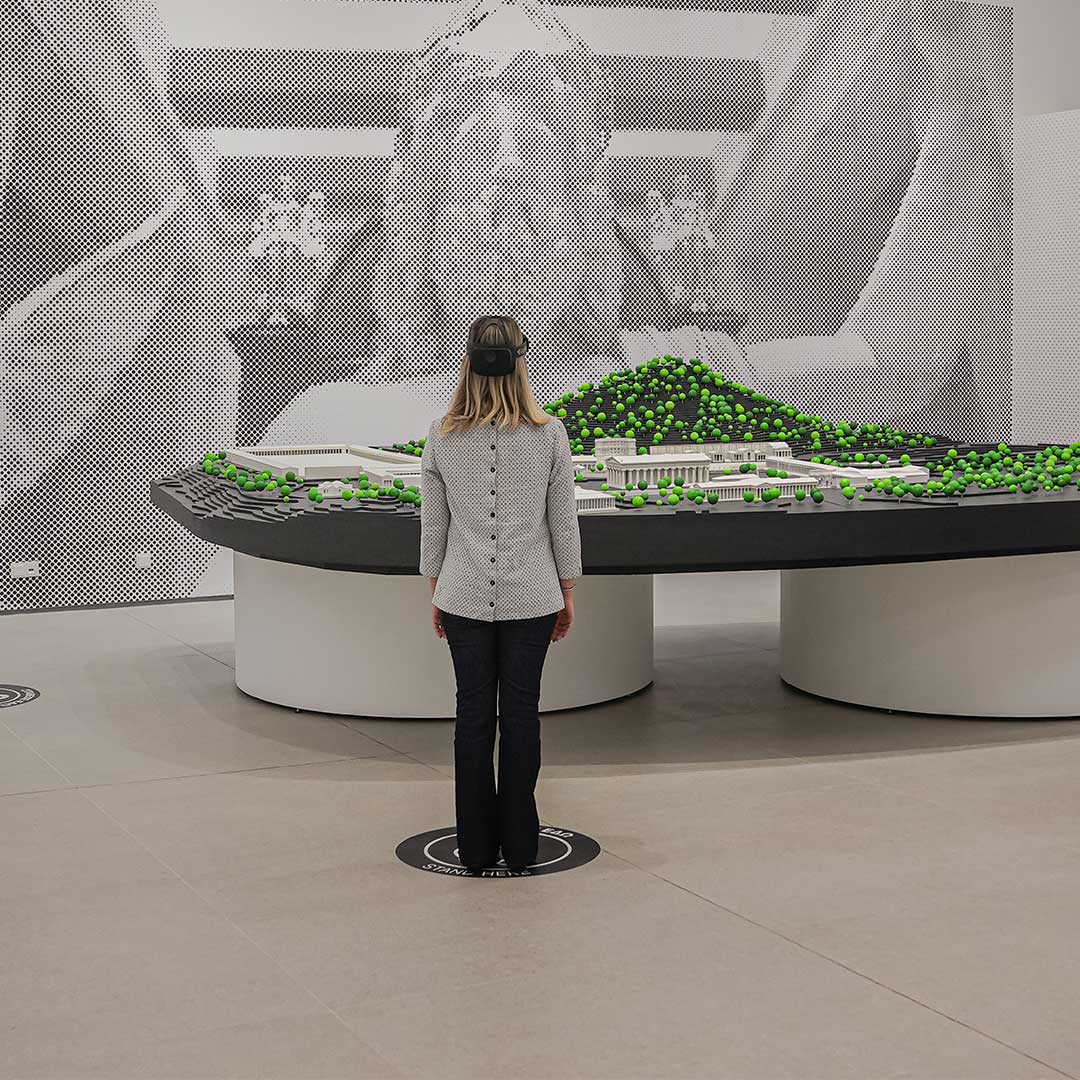
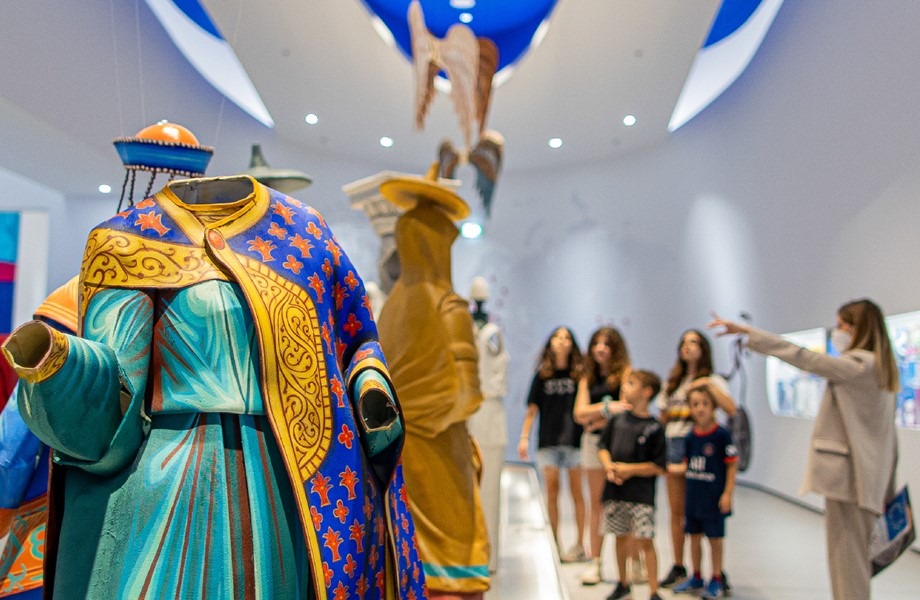
The Museum aims to highlight the concept of “Agon” (endeavor in English). the effort to surpass oneself in all aspects of life. The idea of the “Agon” was the inspiration behind the design of the Permanent Exhibition of the Museum, an exhibition of Olympic Games memorabilia, athletes’ testimonies, and artefacts from Greek antiquity to present.
The Museum adopts state-of-the-art recreational learning techniques, offering a plethora of interpretive media, interactive exhibits (hybrid and digital), installations with original items and heirlooms, from antiquity to modern Olympic Games, composing a unique experiential expedition for the visitor. Be sure not the miss the project Ancient Olympia: Common Grounds, a collaboration between the Hellenic Ministry of Culture and Sports and Microsoft, is a mixed reality exhibition, using Artificial Intelligence to digitally preserve and restore the site of Ancient Olympia. Visitors can digitally navigate and explore the ancient site, as it stood more than 2,000 years ago.
TAGS: ATHENS | ATHENS 2004 | MUSEUMS | MUSIC | POETRY | SPORTS


